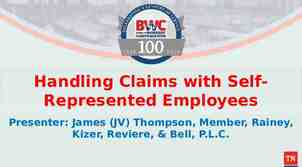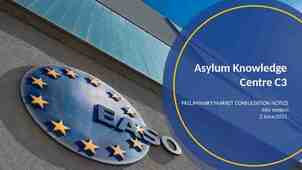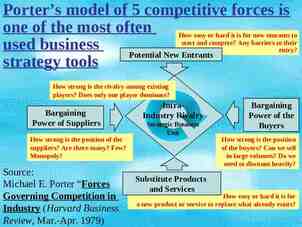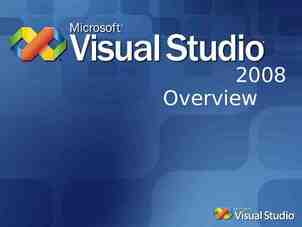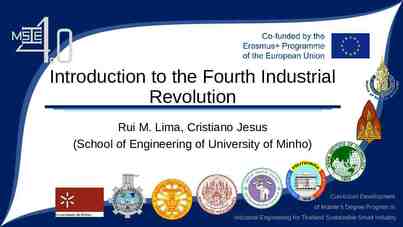1 SESSION 1 TRAINING ON THE QUALITY MANAGEMENT SYSTEM (QMS) FOR
49 Slides3.21 MB

1 SESSION 1 TRAINING ON THE QUALITY MANAGEMENT SYSTEM (QMS) FOR SCHOOL BASED EDUCATORS April – September 2020 ELRC Collective Agreement Number 2 of 2014

2

3 1. OPENING AND WELCOME WELCOME TO THE TRAINING ON QMS FOR SCHOOL BASED EDUCATORS

4 2. PURPOSE OF THE TRAINING To orientate school based educators to implement the Quality Management System (QMS) as informed by ELRC Collective Agreement 2 of 2014.

5 3. UNPACKING THE QMS

6 3.1 BACKGROUND & INTRODUCTION The IQMS has been in place since 2003, but was only implemented in schools from 2005. Despite all the measures put in place to strengthen its implementation, schools continued to experience challenges. The Department of Education conducted a formal review of structures and processes that hindered the successful implementation of the IQMS. As a sequel to the research conducted and persistent efforts by Teacher Unions on strengthening Teacher Development (TD), the Teacher Development Summit was held on 29 June to 2 July 2009; The TD Summit agreed, amongst others, on: oThat a clear, coherent policy and regulatory environment be designed for teacher appraisal and teacher development; oThat teacher appraisal for development be delinked from appraisal for purposes of remuneration and salary progression; and oThat the IQMS be streamlined and rebranded.

7 3.1 BACKGROUND & INTRODUCTION (cont.) Collective Agreement 02 of 2014 on the Quality Management System (QMS) for school-based educators was approved by all parties at ELRC in November 2014 and finalised at the ELRC on 03 September 2019. An addendum to the Agreement outlining the timeframes for training, capacity building and implementation was signed on 10 September 2019.

8 3.1 BACKGROUND & INTRODUCTION (cont.) What is Quality Management System (QMS) for educators? Quality Management System is a performance management system for school-based educators, designed to evaluate the performance levels of individuals in order to achieve high levels of school performance. It is critical in assessing the extent to which educators are performing in line with their job descriptions in order to improve levels of accountability in our schools. Collective Agreement Number 2 of 2014 ( Page 7)

9 3.1 BACKGROUND & INTRODUCTION (cont.) Purpose of the Quality Management System To determine levels of competence of all educators; To enhance educator efficiency, effectiveness and good performance; To improve accountability levels within schools; To provide a basis for decisions on mechanisms to recognize good performance and address under-performance; To ensure that educators perform their duties with integrity, and maintain a positive, vigilant attitude towards all learning activities; To provide a basis for paying salary progression, rewards and other incentives; and To provide mechanisms for assessing educators, taking into account the context within which they operate. ELRC Collective Agreement No. 2 of 2014 (page 8)

10 3.1 BACKGROUND & INTRODUCTION (cont.) Guiding Principles: To recognize that schools are not the same and are operating at different levels of performance and context. To minimize subjectivity through transparent and open discussion throughout the appraisal process To provide feedback by focusing on: – Performance and not personality; – Availability of evidence and not assumptions; – Objectivity and not subjectivity; – The specific and concrete and not the general and the abstract ELRC Collective Agreement Number 2 of 2014 (pages 8-9)

11 3.2 THE ROLE PLAYERS The Principal School Management Team Educator Resource person (Optional) Circuit Manager Grievance Committees

12 3.2 THE ROLE PLAYERS (cont.) ROLES AND RESPONSIBILITIES OF INDIVIDUALS AND STRUCTURES 1. Principal Ensures that every educator has access to the QMS instrument and any other relevant documents Ensures that the QMS is implemented uniformly and effectively 2. School Management Team (SMT) Conducts Performance Appraisals of educators, including classroom observations, and keeps records thereof. 3. Educator Conducts a self-appraisal prior to being appraised by the immediate supervisor Allows the immediate supervisor to conduct lesson observations and shall keep relevant evidence for the appraisal process

13 3.2 THE ROLE PLAYERS (cont.) ROLES AND RESPONSIBILITIES OF INDIVIDUALS AND STRUCTURES 4. Resource Person (Optional – Observer) The resource person is an educator who may be requested by the appraisee to assist in the appraisal process through provision of subject or other relevant expertise 5. The Circuit Manager Manages the performance of principals in a consultative, supportive and non-discriminatory manner to enhance school efficiency and accountability Agrees on a work plan with the principal with clear annual targets for improvement ELRC Collective Agreement Number 2 of 2014 (pages 10-11)

14 3.2 THE ROLE PLAYERS (cont.) ROLES AND RESPONSIBILITIES OF INDIVIDUALS AND STRUCTURES 6. Grievance Committee at school level Resolve any grievance or disagreements at school level 7. Grievance Committee at circuit level Resolve any grievance or disagreements referred to it by the school grievance committee. ELRC Collective Agreement Number 2 of 2014 (page 11)

15 3.3 PERFORMANCE STANDARDS, CRITERIA and DESCRIPTORS PERFORMANCE STANDARDS The Performance Standards in the instrument form the core elements of the job description for educators. CRITERIA The criteria form the key deliverables for each Performance Standard DESCRIPTORS Descriptors are phrases that aid in defining and outlining the expected conduct for a particular criterion.

16 s d r da n ta S e c n a m r o f Extra-mural r e P and co- curricular participation Professional conduct Creation of a positive learning environment Post Level 1 Curriculum knowledge, lesson planning and presentation Learner assessment and achievement

17 3.3 PERFORMANCE STANDARDS, CRITERIA and DESCRIPTORS (cont.) l1 e v Le Performance Standard No. of Criteria No. of descriptors 1. Creation of a positive learning environment 2 7 2. Curriculum knowledge, lesson planning and presentation 4 12 3. Learner assessment and achievement 4. Professional conduct 3 2 7 9 5. Extra-mural and co-curricular participation 1 3 Total 12 38 t s Po Maximum Score 152 Classroom Observation: Performance Standards 1 - 3 ELRC Collective Agreement Number 2 of 2014 (pages 29-33)

18 s d r a d n a t S e c n a m r o f r Management e P of Curriculum Creation of a positive learning environment Curriculum knowledge, lesson planning and presentation POST LEVEL 2 Extra-mural and cocurricular participation Learner assessment and achievement Professional conduct

19 3.3 PERFORMANCE STANDARDS, CRITERIA and DESCRIPTORS (cont.) l2 eve L st No. of Criteria No. of descriptors 2 7 2. Curriculum knowledge, lesson planning and presentation 4 12 3. Learner assessment and achievement 4. Professional conduct 3 2 7 9 5. Extra-mural and co-curricular participation 1 3 Performance Standard Po 1. Creation of a positive learning environment 6. Management of the curriculum 4 Total 16 Maximum Score 228 Classroom Observation: Performance Standards 1 - 3 19 57 ELRC Collective Agreement Number 2 of 2014 (pages 41-46)

20 ce n a m r rds o f r e P tanda Management S and advocacy Leading the learning school Shaping the direction and development of the school of extra-mural activities Managing human resources (staff) in the school Principal / Deputy Principal Managing the school as an organization Developing and empowering self and others Managing quality and securing accountability

21 3.3 PERFORMANCE STANDARDS, CRITERIA and DESCRIPTORS (cont.) 3 – al l e ip v c e n Performance Standard st L ty Pri o P pu e D 1. Leading the learning school No. of Criteria No. of descriptors 2 13 2. Shaping the direction and development of the school 2 6 3. Managing quality and securing accountability 2 5 4. Developing and empowering self and others 2 4 5. Managing the school as an organization 3 5 6. Managing human resources (staff) in the school 1 2 7. Management and advocacy of extra-mural activities 1 2 Total 13 37 Maximum Score 148 Classroom Observation: Performance Standard 1 (Criterion 1) ELRC Collective Agreement Number 2 of 2014 (pages 56-65)

22 3.3 PERFORMANCE STANDARDS, CRITERIA and DESCRIPTORS (cont.) 4- el v e L pal t s Po rinci P No. of Criteria No. of descriptors 1. Leading the learning school 2 15 2. Shaping the direction and development of the school 2 13 3. Managing quality and securing accountability 4. Developing and empowering self and others 5. Managing the school as an organization 6. Managing human resources (staff) in the school 2 2 3 1 11 9 14 5 7. Management and advocacy of extra-mural activities 1 4 Total 13 71 Performance Standard Maximum Score 284 Classroom Observation: Performance Standard 1 (Criterion 1) ELRC Collective Agreement Number 2 of 2014 (pages 75-85)

23 3.4 THE IMPLEMENTATION PROCESS

24 3.4.1 IMPLEMENTATION PROCESS Timelines Formal Appraisals are conducted twice per annum as follows: Mid-year appraisal: Undertaken towards the end of the second term, taking into account all forms of assessment administered during the first and second term. Annual appraisal: Completed by the end of the school calendar year, taking into account all forms of assessments prior to this appraisal. ELRC Collective Agreement Number 2 of 2014 (page 12)

25 3.4.2 IMPLEMENTATION PROCESS - Activities MID-YEAR / ANNUAL APPRAISAL A. SELFAPPRAISAL BY THE EDUCATOR The educator must conduct a selfappraisal prior to the appraisal by his/her supervisor. B. PREAPPRAISAL DISCUSSION A preappraisal discussion between the supervisor and educator must be held before any lesson observation C. LESSON OBSERVATION D. POSTAPPRAISAL DISCUSSION Lesson observations undertaken by the supervisor as part of the mid-year and annual appraisal process Scores given by supervisor to Performance Standards that could not be rated during lesson observation. Discussion between supervisor and educator. Signing of appraisal instrument/s. Participation of Resource person in QMS activities is optional E. Completion of QMS instrument Supervisor forwards completed appraisal instruments to Principal for verification and signing. ELRC Collective Agreement Number 2 of 2014 (pages 12-14 )

26 A. SELFAPPRAISAL BY THE EDUCATOR The educator must conduct a self- appraisal prior to the appraisal by his/her supervisor. The educator must be in possession of a copy of the appraisal instrument – Annexure A1 (PL1). The educator will then use the instrument to: a) Fill-in SECTION A – Educator and School Information. b) Rate himself/herself for each descriptor. c) Complete the COMMENTS column by recording Strengths and Areas for Development for each Performance Standard. d) Complete the OVERALL COMMENTS column by recording Strengths and Areas for Development for each Performance Standard. The educator then forwards the completed self-appraisal instrument to the immediate supervisor. ELRC Collective Agreement Number 2 of 2014 (pages 28-32)

27 B. PREAPPRAISAL DISCUSSION A pre-appraisal discussion between the supervisor and educator must be held before any lesson observation The pre-appraisal discussion is initiated by the immediate supervisor. During the pre-appraisal discussion the educator and the supervisor deliberate on: a) a common understanding of Performance Standards and rating; b) To identify and agree on contextual factors that are likely to impact on the educator’s performance, and how they will be mitigated; c) the expectations of the lesson observations; and d) the records to be submitted as a source of evidence to validate the ratings. e) Logistical arrangements (dates, subjects, time) for Lesson Observations are finalized. ELRC Collective Agreement Number 2 of 2014 (page 13)

28 C. LESSON OBSERVATION Lesson observations will be undertaken by the immediate supervisor as part of the mid-year and annual appraisal process Lesson observations will be undertaken by the immediate supervisor . The resource person may also participate in the lesson observation process. Lesson observations provide a basis for the assessment of the educator’s pedagogical skills. More lesson observations are encouraged, depending on the need. The supervisor completes the Lesson Observation Instrument (Annexure E2 – Page 89) for each lesson observed. The Resource Person records remarks – this is optional. The Lesson Observation Instrument must be signed by both parties and kept as evidence. ELRC Collective Agreement Number 2 of 2014 (page 13 and 89)

29 D. POSTAPPRAISAL DISCUSSION A post-appraisal discussion between the supervisor and educator be held after the lesson observation Prior to the post-appraisal discussion, the supervisor will: orate each educator on his/her performance and record his/her comments based on each performance standard. otake into consideration the self-appraisal submitted by the educator, available records as well as the Lesson Observation data. Supervisor arranges the post appraisal discussion session to provide feedback on the educator’s performance during the appraisal. Supervisor presents the appraisal document to the educator for discussion on strengths and areas for development as well as agreement on ratings. The educator and resource person (optional) will also record his/her comments on the appraisal instrument. A completed instrument will be signed by the educator, the supervisor after the appraisal process. During this session, the development needs of the educator must be acknowledged and follow the CPTD pathway in line with the Integrated Strategic Planning Framework for Teacher Education and Development (ISPFTED).

30 E. Completion of QMS appraisal instrument The supervisor ensures that all information is clearly and accurately recorded in the appropriate columns of the QMS instruments Supervisor forwards completed appraisal instruments to Principal for verification and signing. Principal will sign the completed instrument after both the educators and the supervisor have signed, and after satisfying him/herself that all processes have been complied with. Should there be any discrepancy, this should be brought to the attention of the relevant supervisor as well as the resource person (if applicable) who will be required to correct it. ELRC Collective Agreement Number 2 of 2014 (pages 12-14 )

31 3.4.3 THE APPRAISAL INSTRUMENT QMS PL1

32 3.4.4 RATINGS & SCORING A rating of one (1) to four (4) will be allocated to each criterion in the appraisal instrument. A score will be allocated for each Performance Standard and will consist of the sum of the ratings allocated to each criterion in that Performance Standard. In allocating a rating to a descriptor/element where contextual factors have been identified, consideration must be given to the following – The nature of the contextual factor; – The level of its impact on the educator’s performance, and – The extent to which the educator is/was able to mitigate such impact. Collective Agreement Number 2 of 2014 ( Page 14)

33 3.4.4 RATINGS & SCORING (cont.) Rating Scale RATING 1 2 3 4 DESCRIPTOR Unacceptable: The level of performance does not meet minimum expectations and requires urgent intervention and support PERCENTAGE 0% - 49% Acceptable: Satisfies minimum expectations. The level of performance is acceptable and is in line with the minimum expectations, but development and support are still required 50% - 69% Good: Performance meets expectations, but some areas are still in need of development and support 70% - 84% Outstanding: Performance exceeds expectations. Although performance is outstanding, continuous self-development and improvement are advised. 85% - 100% ELRC Collective Agreement Number 2 of 2014 (pages 26, 37, 51 & 70)

34 3.4.5 COMPLETION OF INSTRUMENTS The supervisor must forward the completed instrument to the principal’s office at the scheduled time. The principal will sign the completed instrument after both the educator and the supervisor have signed, and after satisfying him/herself that all processes have been complied with. Should the principal be aware of any discrepancy, this should be brought to the attention of the relevant supervisor as well as the resource person, who will be required to correct it. The principal reserves the right to designate any member of the SMT, (who is conversant with the subject or phase) to conduct an appraisal process should it be evident that the relevant supervisor is unable to do so. ELRC Collective Agreement Number 2 of 2014 (page 14)

35 3.4.6 RELATIONSHIP BETWEEN APPRAISAL AND DEVELOPMENT The QMS will be one of the mechanisms used to identify the developmental needs of educators. 1st QUARTER 2ndQUARTER Informal appraisal. Records may not be kept Lesson observation Self-appraisal Mid-year appraisal Principal verifies & signs DEVELOPMENT To be in line with the framework on ISPFTED. Diagnostic self-assessment Personal development through participation in workshops, subject committee meetings & professional learning communities Ongoing self-reflection 4th QUARTER Lesson observation Self-appraisal Annual appraisal Principal verifies & signs 3rd QUARTER Informal Appraisal. Records may not be kept

36 3.5 DISAGREEMENTS AND GRIEVANCES School Level In cases of any disagreement between the educator and the supervisor, all efforts should be made to resolve such disagreements at that level, including intervention by the principal. If no resolution is found, the aggrieved party must refer the grievance to the principal within 3 working days. Principal must establish a grievance committee within 5 working days after receipt of the grievance. The grievance committee must resolve the grievance within 10 working days after its establishment. Circuit Level Should the aggrieved party be unhappy with the decision of the grievance committee at school level, he/she must refer the matter to the circuit manager in writing within 5 working days. The circuit manager must establish a grievance committee within 5 working days after receipt of the grievance The circuit grievance committee must resolve the grievance within 10 working days after its establishment. Should an employee disagree with the decision of the circuit grievance committee, such an employee may invoke the dispute resolution procedures of the ELRC. ELRC Collective Agreement Number 2 of 2014 (pages 16-17)

37 3.5 DISAGREEMENTS AND GRIEVANCES (cont.) Composition of the Grievance Committee School Level The principal, who is the Chairperson; Where necessary, the principal may request a principal from a neighbouring school to preside over the matter; One other member of the SMT, and One representative from each of the unions that are admitted to the ELRC and have members in the school. Circuit Level The Circuit Manager, who is the Chairperson; Where necessary, the circuit manager may request a circuit manager from a neighbouring circuit to preside over the matter; One other official from the district, and One representative from each of the unions that are admitted to the ELRC. ELRC Collective Agreement Number 2 of 2014 (pages 16-17)

38 3.5 DISAGREEMENTS AND GRIEVANCES (cont.) Supervisor and Educator Disagreement Agreement School Grievance Committee discuss to resolve Circuit / District office for verification Disagreement Circuit Grievance Committee Agreement Process ends Disagreement Dispute resolution procedures Agreement Process ends Disagreement Dispute resolution procedures ELRC Collective Agreement Number 2 of 2014 (pages 16-17)

39 3.6 FIRST & THIRD TERM - INFORMAL APPRAISAL Informal appraisal is aimed at assessing whether the educator’s performance is complying with the required performance standards. Evidence from CASS/SBA and PDP are taken into account and support is provided, where necessary, by the Departmental Head. It is formative and emphasizes continuous improvement. Informal appraisal is undertaken in the First and Third Terms. Records may not be kept. ELRC Collective Agreement Number 2 of 2014 (pages 15; 19)

40 3.7 Summary - what needs to be done in each term

41 3.8 KEY DIFFERENCES: QMS & IQMS QMS IQMS 1. The QMS introduces a mid-year educator appraisal followed by an annual appraisal. 1. Educator appraisals in the IQMS are conducted annually. 2. The QMS requires a member of the School Management Team (SMT) to conduct performance appraisals of educators under his/her supervision, including classroom observations. 2. The Development Support Group (DSG) was responsible for educator appraisal, lesson observations and development in the IQMS. 3. Resource Person may be requested by the appraisee to serve as observer 3. Peer selected by the educator to serve on the DSG. 4. The process is driven by the principal and managed by the School Management Team (SMT). 4. Staff Development Team (SDT) responsible for managing IQMS.

42 3.8 KEY DIFFERENCES: QMS & IQMS (cont.) QMS IQMS 5. Self-evaluation at least twice per year. 5. Self-evaluation conducted at least once per year. 6. Separate appraisal instruments for different post levels. 6. 7. Annual work plan with clear targets 7. and deliverables for PL 2 – PL 4. Nil 8. Weighting scale for principal who 8. teaches greater than of less than 30% of the scheduled teaching time Differentiation in a principal’s teaching schedule not considered during appraisal. 9. No PGP to avoid duplication with CPTD system. PGPs completed annually. 9. One appraisal instrument for all post levels.

43 3.8 KEY DIFFERENCES: QMS & IQMS (cont.) The number of Performance Standards (PS) for educators in each post level has been reduced as follows: Post Level QMS IQMS 1 5 PS 7 PS 2 6 PS 10 PS 3 7 PS 12 PS 4 7 PS 12 PS The criteria for each performance standard focus on the deliverables within a school.

44 3.9 QUESTIONS & COMMENTS ELRC Collective Agreement Number 2 of 2014 (page 18)

3.10 WAY FORWARD IMPLEMENTATION OF MANAGEMENT PLAN January - June 45 MONTH January – March ACTION RESPONSIBILITY 1.Advocacy & training Principal, SMT & 2.Signing of work plans (By end of educators as well as January) Circuit Manager 3. Ensure that educators have access to collective agreement and training manual 4. Roles and responsibilities discussed 5. Develop implementation plan/schedule 6. Circuit Manager verifies April - June 1.Self-appraisal by educators 2. Pre-appraisal discussion 3. Lesson observation 4. Mid-year appraisal 5. Post-appraisal discussion 6. Principal verifies & signs Principal, SMT, educators, resource person (if applicable) as well as Circuit Manager ELRC Collective Agreement Number 2 of 2014 (page 18)

46 3.11 WAY FORWARD IMPLEMENTATION OF MANAGEMENT PLAN (cont.) July - December MONTH ACTION RESPONSIBILITY July September 1. Performance Review October December 1. Self-appraisal by educators 2. Pre-appraisal discussion 3. Lesson Observation 4. Annual appraisal 5. Post-appraisal discussion 6. Principal verifies & signs 7. Verification and signing of annual Principal appraisals 8. Submission of completed composite score sheet to District 9.Circuit Manager verifies Principal, SMT, educators, resource person (if applicable) as well as Circuit Manager Principal, SMT, educators, resource person (if applicable) as well as Circuit Manager ELRC Collective Agreement Number 2 of 2014 (page 18)

47 3.10 WAY FORWARD IMPLEMENTATION OF MANAGEMENT PLAN MONTH ACTION July September 1. Performance Review October December 1. Self-appraisal by educators 2. Pre-appraisal discussion 3. Lesson Observation 4. Annual appraisal 5. Post-appraisal discussion 6. Principal verifies & signs 7. Verification and signing of annual appraisals 8. Submission of completed composite score sheet to District 9.Circuit Manager verifies RESPONSIBILITY Principal, SMT, educators, resource person (if applicable) as well as Circuit Manager Principal, SMT, educators, resource person (if applicable) as well as Circuit Manager Principal

48 END OF SESSION ONE


